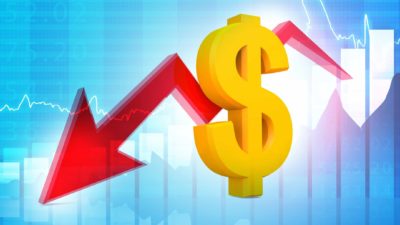The S&P/ASX 200 Index (ASX: XJO) has had a rather interesting day of trading so far this Wednesday. After initially spending most of the opening hour or so of trading in the red, the ASX 200 rebounded strongly mid-morning.
This is intriguing because it was around this time that the Australian Bureau of Statistics (ABS) released the latest data on wages and wage growth. Yes, the ABS has released its wage and labour data for the quarter ending 31 December 2021. And it makes for some interesting reading.
Aussie incomes are up
According to the ABS, Australia's seasonally adjusted Wage Price Index (WPI) rose by 0.7% over the December quarter. That puts the annual wage growth rate at a solid 2.3%. That's well above the 1.4% recorded at the same point in the previous year.
Queensland was the state that recorded the highest growth at 0.8%. Victoria, South Australia, Western Australia, and the Northern Territory are dragging the chain at 0.5%.
Here's some of what Michelle Marquardt, ABS Head of Prices Statistics, had to say on these numbers:
The proportion of pay rises reported over the December quarter was higher than usually seen at this time of year. The implementation of the last phases of award updates and state-based public sector enterprise agreements, on top of a rising number of wage and salary reviews, drove wages up 0.7 per cent over the quarter.
Wage pressure continued to build over the December quarter for jobs with specific skills. Private sector wage growth occurred across a broad range of industries as businesses looked to retain experienced staff and attract new staff. Private sector wages rose 2.4 per cent annually, maintaining the rate of growth recorded in September quarter 2021.
But why would numbers like these cause ASX 200 shares to rise, as appears to have been the case this morning? Don't higher wages mean higher costs for businesses?
Why are ASX 200 shares rising?
Well, in short, higher wages are a very good indication that the economy is firing on all cylinders. We also happen to have very low unemployment right now by historical standards, so a tight labour market and rising wages mean Australian consumers have more money in their pockets to spend. And higher spending is good news for almost every company on the ASX.
Also, as The Motley Fool's own Chief Investment Officer Scott Phillips discussed this week, rising wages are an especially good sign amid the rising inflation we have seen in recent months. Higher inflation means higher prices across the economy, so it's a good sign that wages are rising as well. This is ensuring that Aussie workers' incomes can at least keep pace with any price increases.
So that might be why the ASX 200 index has powered into the green after the release of these numbers. It's certainly nothing to turn our noses up at.
At the time of writing, the ASX 200 is up a decent 0.45% to 7,193 points.









